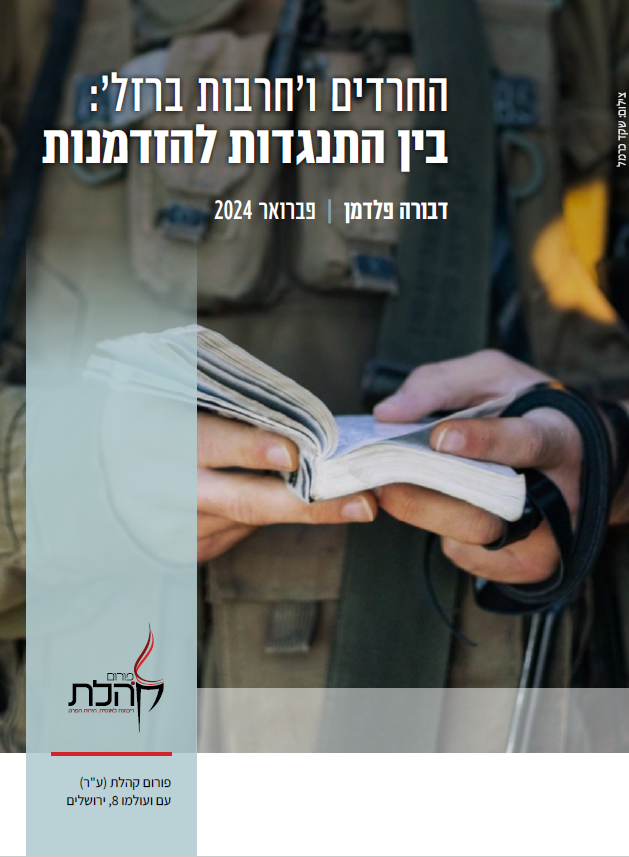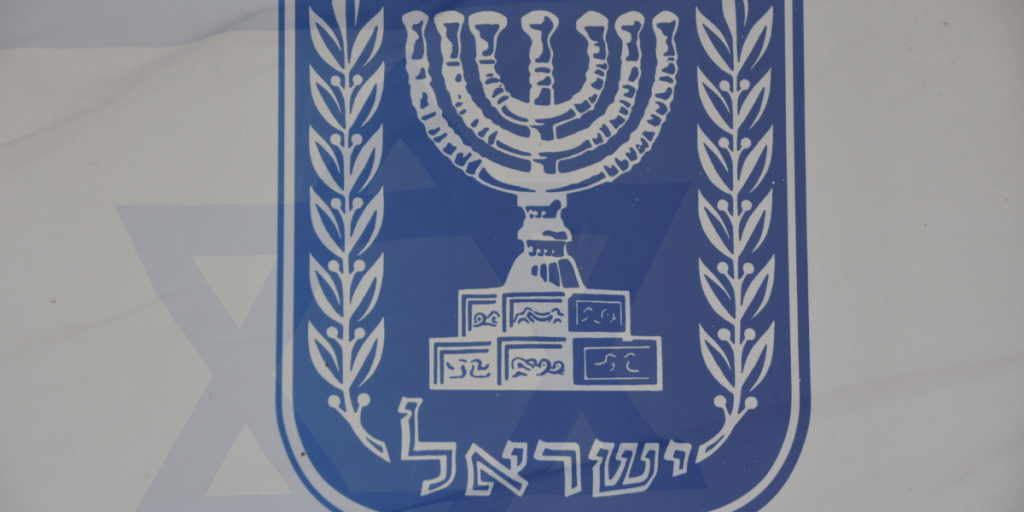This paper examines the reactions of the Haredi (ultra-orthodox) sector to the pivotal events of October 7 that drew a fault line in Israeli society. The research is based on interviews with professionals from a variety of fields and on an analysis of texts published on mainstream and social media to evaluate the frame of mind in Haredi society.
The first chapter describes various initiatives and the reactions to them on the individual and group level.
The second chapter looks at the issue of Army service, analyzing the significance of enlistment to the fast track “Phase B” as well as the attitude to the IDF in general, offering several principles for Haredi integration into civil and military service.
The third chapter discusses the tensions between insulation and solidarity and the growing internal polarization.
The fourth chapter highlights the potential in groups on the “periphery” of the Haredi sector, such as working Haredim, for whom various initiatives for tailored solutions or alternatives to their more moderate approach are already in place, calling for policymakers to look beyond the mainstream to communities more open to change.
The fifth chapter offers a historical view of traditional “Haredism” and the “Agudat Yisrael” movement and suggests renewing the forgotten tradition of combining steadfast commitment to a way of life with moderation, pluralism and a cautious but sympathetic attitude to the state and its institutions.
The closing chapter presents general pointers for further research and policy formulation.
Summary:
Four major themes emerged from the analysis: (1) there is no one ‘Haredi’ response but a continuum, ranging from solidarity to detachment on an axis of hard mainstream (center) and Haredi “periphery”; (2) a distinction must be drawn between individual and group responses as well as between declarations and actions, while also recognizing the importance of declarations as a mechanism of legitimization for others to act outside community norms; (3) parts of the Haredi community identify themselves more with Israeli society at large and internalize the existential threat, but the extent of this group, as well as the practical expression of this identification isn’t clear at this point, but there is a level of recognition that army and civic service are necessary and the legitimization of such service under certain conditions, especially in regard to a civic track; and (4) alongside these developments, Haredi leadership and institutions, as is the case in the hard mainstream as a whole still demonstrate great opposition to this identification with Israeli society and its practical expression in initiatives aimed at direct assistance to the IDF.
Some processes and trends were strengthened after the war:
1| a growing infrastructure for institutional Haredi civil society, with women’s activities taking pride of place
2| individual change and differentiation processes not necessarily reflected on a community level;
3| middle leadership growing in the space between communities and institutions;
4| the Haredi periphery’s growing strength and ability to unite and consolidate different groups around a shared story and a shared destiny with Israeli society as a potential force multiplier;
5| a sense of solidarity with society and openness to the national effort and even to army service when tailored to their needs.
Recommendations:
1| focusing on the periphery – directing resources and policies to the growing Haredi periphery, breaking away from the paradigm that change must come from the mainstream
2| bottom up work with communities themselves and with the middle leadership rather than with the formal.
3| promoting dialogue and initiatives aimed at individuals, by mapping out and developing the civil infrastructure and initiatives that sprung up in the past months
4| Adapting the army – striving to find ways to improve Haredi access, preparation, adaptations and knowledge, focusing on target communities more open to change, while staying away from appearing to pose a direct threat on Torah scholarship:
- Accessibility and consolidation – appoint a designated party to gather all those interested, in language adapted to the Haredi sector and with non-internet responses available to remove barriers to entry for potential enlisters.
- Preparation for Army service – by institutions along the lines of mekhinot and hesder yeshivot that can mentally prepare and religiously fortify enlisters.
- Creation of adapted service tracks for Haredim that take circumstances such as age and family status into consideration.
- Recognition of civil tracks such as Zaka, Hatzalah and MDA organizations as military service.
Considering the variance of different groups within the Haredi society and the range that exists even within those groups considered uniform, and in light of the opposition to change, it is recommended to find ways to work with Haredi individuals and with communities on the Haredi “periphery” and to cultivate current civil leadership and civil social infrastructure.
For the full paper in Hebrew




